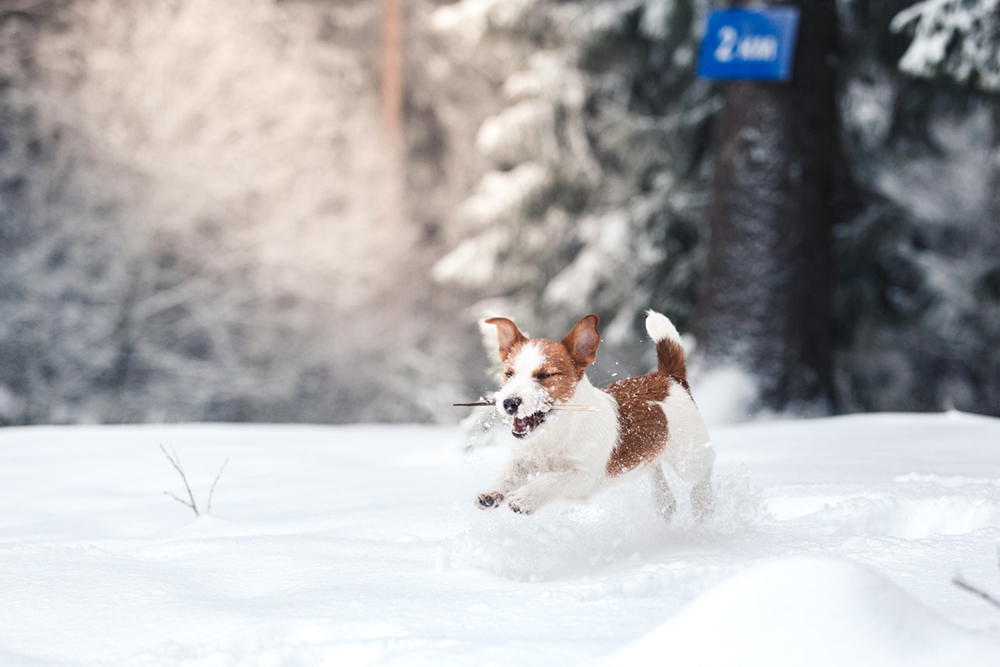Winter means a break from lawn care, right? Well, maybe. Winter lawn care varies depending on your growing zone, but it generally comes down to three things: Keeping your grass protected, short and fed.
If your lawn is still covered in fall leaves, don't rake them up. Remove any branches or other large debris, and then mow over the leaves to cover the lawn in a fine mulch that will continue to protect and nourish the lawn.
Here are some additional do's and don'ts for winter lawn care.
While you were sleeping: Dormant lawns
If your grass stays brown and doesn't grow in winter, then it is dormant. These care guidelines for dormant lawns especially apply to those of you in USDA zones 3-7, but if you live in zones 8-10 and would not like to mow or water in winter, you may choose to let your warm-season grass go dormant as well.

If you live in an area where snow stays on the ground through most of the winter, you’re off the hook. Go out and enjoy your care-free yard with a friend.
Keep the lawn short, and do not water until spring. This will help prevent any diseases and pests that might develop on the dead blades of grass. There is also no need to fertilize lawns in winter.
If you couldn't already tell, a dormant lawn doesn't ask for much. The important thing is that you protect it from any debris, foot traffic, road salt or anything else that would wreak havoc on your sleeping grass.
Busier bodies: Actively growing lawns
If your cool- or warm-season lawn is still pushing out green blades of grass, then it is actively growing. If you have overseeded with a cool-season lawn like ryegrass or Kentucky bluegrass, then it will need to be watered regularly to look its best.
Warm-season lawns such as Zoysia or St. Augustine grass are still nearly dormant in winter even if they stay green, and this means that you have two choices: Water as needed to keep it green, or withhold water and let it go brown. The latter option is the best one if you're trying to save water and would like to take a break from mowing.
Fertilizing is only necessary for warm season grasses, and even those should only be fed in early winter, before the first frost. Choose a product specifically made for your lawn, and follow label instructions. Pull any unwanted weeds that appear, or spray them with a post-emergent herbicide in late winter.
Across the board: Any and all lawns
While these tips will certainly help your lawn in the long run, grasses will still do just fine if left alone in winter. Well, for the most part. There still are ways to hurt your winter lawn. Here's what not to do.
The commandments of winter lawn care include the following:
- Do not compact your lawn with foot traffic, large objects or parked vehicles. A compacted lawn leaves little room for grass roots to grow, especially if there is clay present in your soil.
- Do not leave branches, toys or other debris on the lawn. Not only does it look bad, scattered stuff also shades out the grass, creating dead spots when spring returns.
- Do not salt the lawn. The road salt you use to melt ice on your driveway is harmful to turfgrasses and the soil it inhabits. If necessary, mark the boundaries of your lawn before salting.
- Do not let fall leaves remain on the lawn. While fall leaves can make a great mulch in your garden beds, they shade out turfgrasses and may promote pests and diseases. Mow over grasses with a mulching cap attached to your mower so that the shredded leaves can mulch and nourish the grass.
- Do not water excessively. Even though growing lawns can be watered as needed, any lawn will begin to suffer if it is watered too much. Cool and wet conditions create a perfect storm for turf diseases.
Plan next year’s landscape
Your yard might look dead now, but winter is an ideal time to see the “bones” of your landscape and plan any changes to your lawn.
Is the grass beginning to thin out in the shade of a large tree? If so, consider replacing the grass there with a garden bed.
Are there areas that tend to form puddles after snowmelt or rains? Consider making a French drain, or converting the space into a rain garden.
Perhaps you've been considering building a deck, paving a path or edging the lawn with bricks. Enjoy the downtime and jot down some ideas for the lawn and garden of your dreams.
Related:
- 10 Ways to Perk Up Your Winter Garden
- Troubleshooting Houseplant Woes
- Secrets to a Thriving Indoor Herb Garden
from Zillow Porchlight | Real Estate News, Advice and Inspiration http://www.zillow.com/blog/winter-lawn-care-192026/
via Reveeo
No comments:
Post a Comment